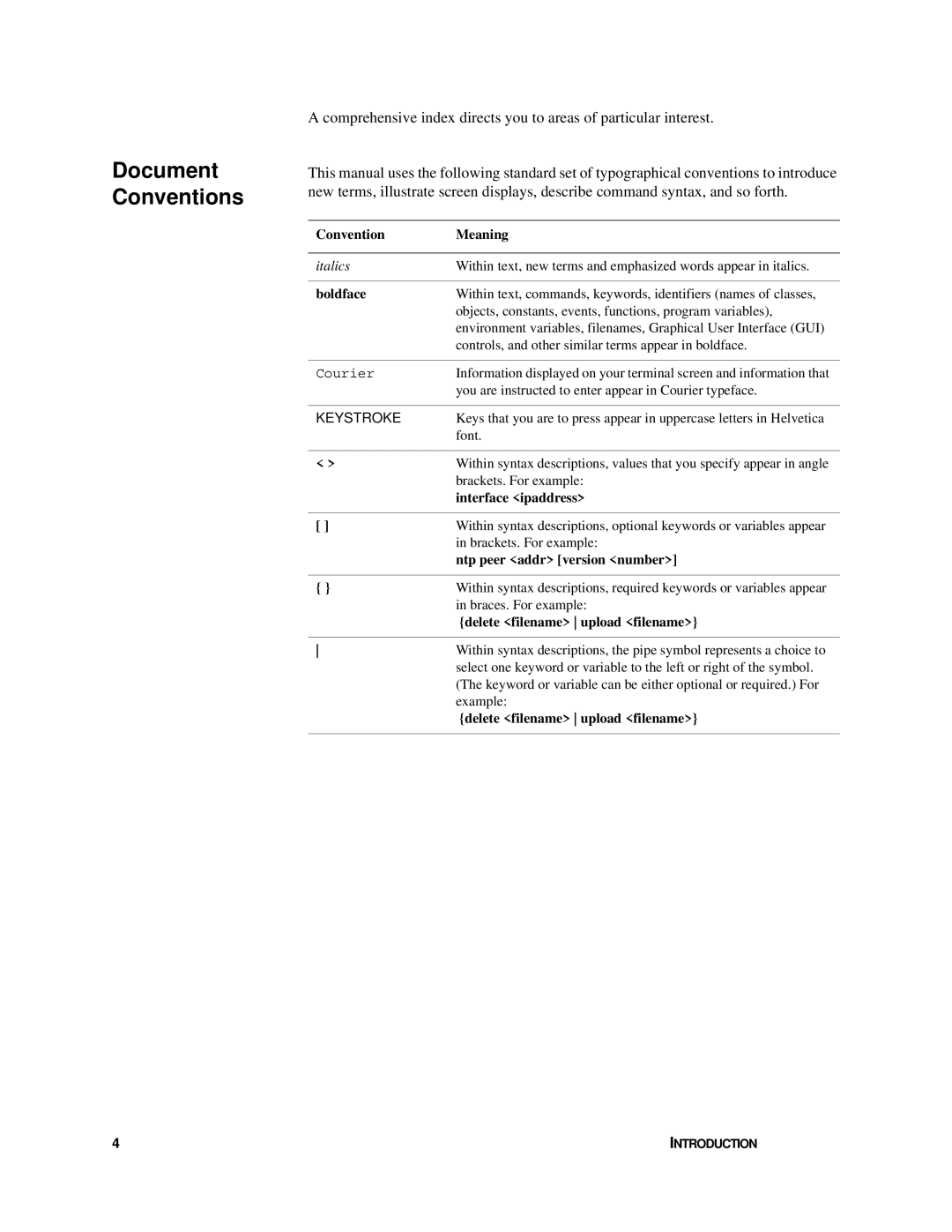Document Conventions
A comprehensive index directs you to areas of particular interest.
This manual uses the following standard set of typographical conventions to introduce new terms, illustrate screen displays, describe command syntax, and so forth.
Convention | Meaning |
|
|
italics | Within text, new terms and emphasized words appear in italics. |
|
|
boldface | Within text, commands, keywords, identifiers (names of classes, |
| objects, constants, events, functions, program variables), |
| environment variables, filenames, Graphical User Interface (GUI) |
| controls, and other similar terms appear in boldface. |
|
|
Courier | Information displayed on your terminal screen and information that |
| you are instructed to enter appear in Courier typeface. |
|
|
KEYSTROKE | Keys that you are to press appear in uppercase letters in Helvetica |
| font. |
|
|
< > | Within syntax descriptions, values that you specify appear in angle |
| brackets. For example: |
| interface <ipaddress> |
|
|
[ ] | Within syntax descriptions, optional keywords or variables appear |
| in brackets. For example: |
| ntp peer <addr> [version <number>] |
|
|
{ } | Within syntax descriptions, required keywords or variables appear |
| in braces. For example: |
| {delete <filename> upload <filename>} |
|
|
Within syntax descriptions, the pipe symbol represents a choice to | |
| select one keyword or variable to the left or right of the symbol. |
| (The keyword or variable can be either optional or required.) For |
| example: |
| {delete <filename> upload <filename>} |
|
|
4 | INTRODUCTION |
